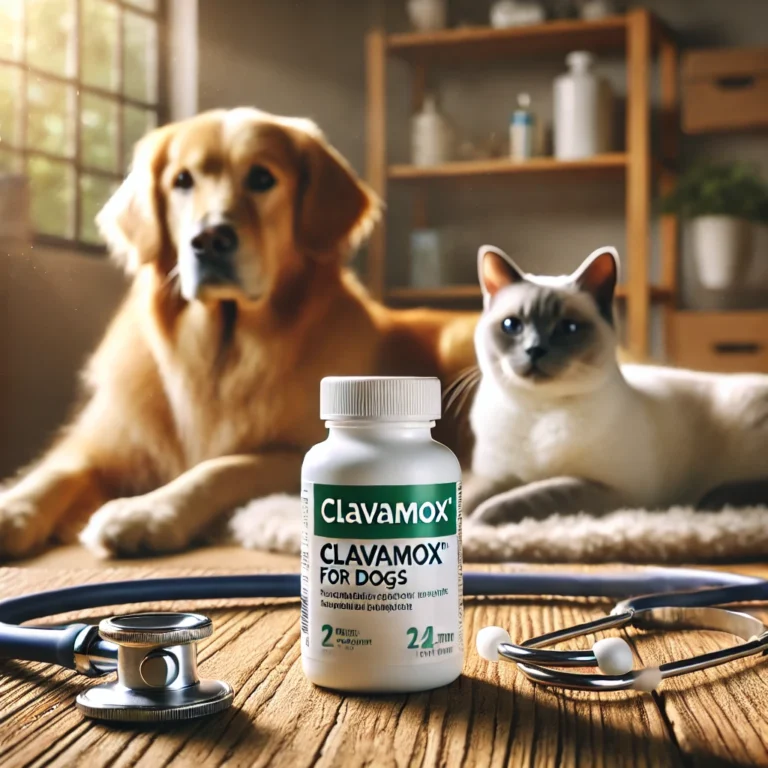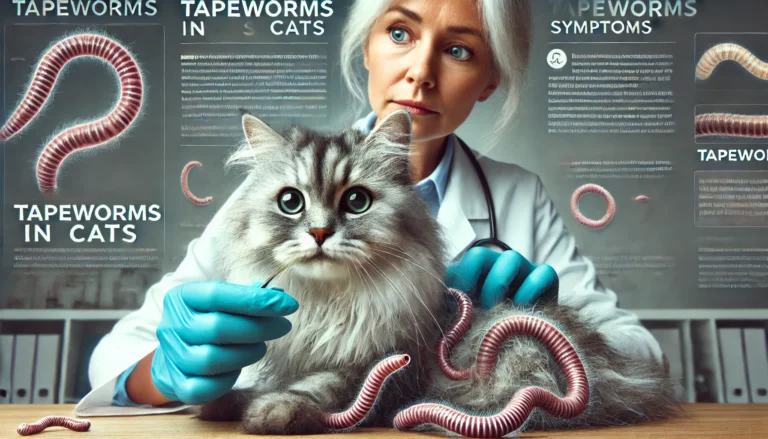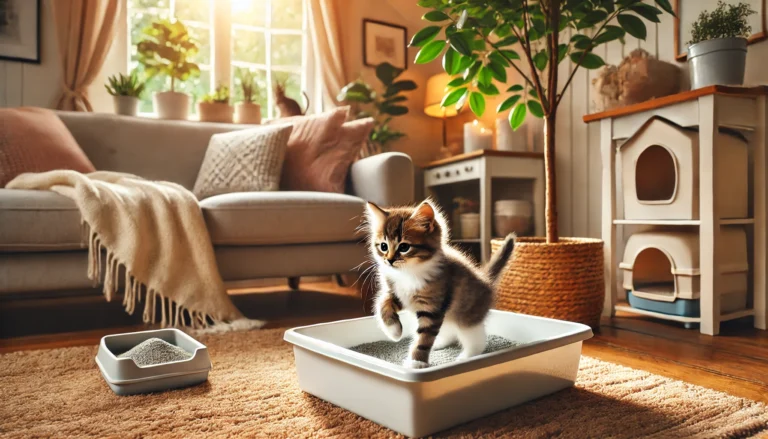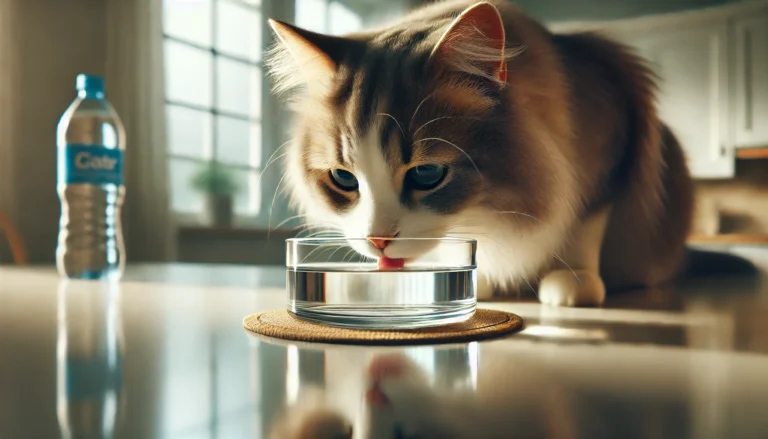Why Is My Cat Vomiting Blood?

Cat Vomiting Blood
Why Is My Cat Vomiting Blood?IF! Your cat is vomiting blood, it’s considered a serious condition and requires immediate veterinary attention, as it could be caused by a range of issues including: gastrointestinal ulcers, foreign objects swallowed (like bones or string), inflammatory bowel disease (IBD), dental disease, viral or bacterial infections, liver or kidney disease, blood clotting disorders, poisoning (like rat poison), tumors, trauma, or severe vomiting.
Understanding Cat Vomiting Blood
Different Types of Vomit and Their Meanings
A cat vomiting blood can range in color from white frothy vomit to dark brown, which can signal different problems. For instance, red vomit or bloody emesis suggests active bleeding, whereas a brown vomit cat may have ingested something harmful.
the Digestive System in Cats
The digestive system in cats is a complex network designed to process food and extract nutrients effectively. Starting with the mouth, where food is chewed and mixed with saliva, the process moves down the esophagus into the stomach. Here, acids and enzymes break down the food into a digestible form. The partially digested food then travels through the small intestine, where most nutrient absorption occurs. The large intestine completes the process by absorbing water and preparing waste for excretion. Understanding this system is crucial for identifying issues like cat vomiting blood, which could indicate disruptions anywhere along this pathway.
Causes of Hematemesis (Blood in Vomit)
Common Causes of Hematemesis
Common causes of hematemesis, or cat vomiting blood, in cats include dietary indiscretion, such as eating something harmful or toxic; ingestion of foreign objects; gastrointestinal ulcers; infections; and internal injuries. Additionally, systemic conditions like kidney or liver disease, and even severe stress, can lead to hematemesis. It’s crucial to identify the underlying cause to effectively treat this serious symptom and prevent further health complications.
Serious Medical Conditions
Serious medical conditions that can cause cat vomiting blood include gastrointestinal ulcers, kidney disease, liver disease, and various types of cancer, particularly those affecting the digestive tract. These conditions can lead to significant health complications and may manifest as hematemesis among other symptoms. Early and accurate diagnosis is critical to managing these serious conditions effectively, ensuring better health outcomes for the affected cats.
Diagnosing the Cause of Vomiting Blo
Diagnosing the cause of cat vomiting blood involves a thorough veterinary examination, which may include a review of the cat’s medical history, physical examination, and a series of diagnostic tests. These tests can include blood work to assess overall health and organ function, X-rays or ultrasound to view the abdominal area, and possibly an endoscopy to visually inspect the internal surfaces of the stomach and intestines for signs of ulcers, tumors, or foreign objects. Accurate diagnosis is essential to determine the underlying cause and to guide appropriate treatment options.
Tests and Procedures
1.Blood Tests: These are crucial for assessing the cat’s overall health, including liver and kidney function, and for detecting signs of infection or anemia.
2.X-rays or Ultrasound: These imaging techniques help veterinarians visualize the internal organs and identify abnormalities such as tumors, blockages, or foreign objects.
3.Endoscopy: This procedure involves inserting a small camera on a flexible tube into the stomach and intestines to directly observe and sometimes retrieve tissue samples for biopsy. This can reveal ulcers, inflammation, or tumors.
4.Fecal Examination: Checking stool samples can help diagnose parasitic or bacterial infections that might cause gastrointestinal bleeding.
5.Urinalysis: This test can help diagnose urinary system conditions that can be associated with cat vomiting blood.

Treatment Options
Immediate Actions and First Aid
When a cat is found vomiting blood, immediate actions and first aid are crucial to help stabilize its condition before veterinary care can be provided. Here are some steps to follow:
Seek Veterinary Attention: Contact a veterinarian immediately. Vomiting blood can indicate a serious condition that requires prompt medical attention. Provide the vet with all observed symptoms and any recent changes in your cat’s 1.health or environment.
2.Keep the Cat Calm: Reduce stress by providing a quiet, comfortable space. Avoid handling the cat too much as this can increase stress and potentially worsen the situation.
3.Remove Food and Water: Temporarily withhold food and water to prevent further vomiting. After a few hours, and if vomiting has stopped, reintroduce small amounts of water followed by a bland diet as recommended by a veterinarian.
4.Check for Dehydration: Observe your cat for signs of dehydration, such as lethargy, dry gums, and decreased skin elasticity. Dehydration can occur rapidly if a cat is vomiting frequently.
5.Observe and Note Symptoms: Monitor the frequency, amount, and appearance of vomit and any other accompanying symptoms such as diarrhea, lethargy, or changes in behavior. This information is valuable to your veterinarian for diagnosis and treatment planning.
Long-Term Treatment Strategies
For cats diagnosed with conditions that cause vomiting blood, long-term treatment strategies are essential to manage their health and prevent recurrence. Here are key aspects of long-term care:
1.Education and Support: Owners should be educated about their cat’s condition to recognize signs of deterioration or relapse quickly. Support from pet health groups or online communities can also be beneficial.
2.Dietary Management: Maintaining a diet that is gentle on the stomach is crucial. This may involve special prescription diets that are easy to digest and reduce strain on the gastrointestinal system. Regular, small meals can also help manage symptoms.
3.Regular Medication: For conditions like ulcers or chronic kidney disease, ongoing medication may be necessary. This could include proton pump inhibitors or H2 blockers to reduce stomach acid, or other specific medications tailored to the underlying cause.
4.Monitoring and Adjustments: Regular veterinary check-ups are important to monitor the condition and make adjustments to the treatment plan as needed. This includes tracking the cat’s weight, appetite, and overall behavior.
5.Managing Stress: Since stress can exacerbate gastrointestinal problems, creating a calm environment for your cat is essential. This includes minimizing changes in the household, providing comfortable resting areas, and using pheromone diffusers if recommended by your vet.
Home Care and Management
Diet and Nutrition
Diet and nutrition play a critical role in managing and preventing issues related to cat vomiting blood. Here’s how to approach it:
1.Supplements: Depending on the cat’s health, supplements such as probiotics or digestive enzymes might be recommended to support the digestive tract and maintain intestinal health.
2.Specialized Diets: Depending on the underlying cause of the cat vomiting blood, veterinarians might recommend specific therapeutic diets. These diets are formulated to be easily digestible, low in fat, and contain the right balance of essential nutrients to support gastrointestinal health.
3.Hydration: Ensuring your cat remains well-hydrated is vital. Always provide fresh water and consider feeding wet food to increase fluid intake, especially if your cat tends to avoid drinking water.
4.Gradual Feeding: After a cat vomiting blood episode, reintroduce food gradually. Start with small, frequent meals of a bland diet, such as boiled chicken or rice, before transitioning slowly back to the cat’s regular diet.
5.Avoid Irritants: Stay clear of foods that could irritate your cat’s stomach. This includes spicy foods, lactose-containing products, and any known allergens that could trigger gastrointestinal upset.
Monitoring and Comfort
Observation: Keep a close eye on your cat’s behavior and physical condition. Note changes in appetite, activity level, and bathroom habits. Frequent vomiting, lethargy, or other unusual behaviors should be reported to your vet.
1.Comfortable Environment: Create a quiet, stress-free environment for your cat. This includes a cozy resting area away from noisy activities and household traffic. Soft bedding and access to favorite spots can help your cat feel secure and relaxed.
2.Temperature Control: Ensure the area where your cat rests is neither too hot nor too cold. Cats with health issues might be more sensitive to temperature changes, so maintaining a comfortable environment is key.
3.Gentle Handling: When interacting with your cat, be gentle and calm. Stress can exacerbate health issues, so it’s important to make your cat feel loved and secure without overwhelming them.
4.Regular Check-ins: Regularly check your cat for signs of pain or discomfort. Pay attention to their grooming habits and note any deterioration in coat condition, as this can be a sign of underlying issues.
When to See a Vet
Emergency Signs
1.Profuse Vomiting: Repeated or violent vomiting, especially if blood is present, requires immediate veterinary attention to prevent dehydration and further complications.
2.Weakness or Collapse: If your cat appears weak, unable to stand, or collapses, this could indicate severe blood loss or shock and requires urgent care.
3.Pale Gums: Pale or white gums are a sign of significant blood loss and anemia. This is a critical condition that needs immediate veterinary intervention.
4.Rapid Breathing or Heart Rate: These symptoms can indicate pain, distress, or shock. If your cat’s breathing or heart rate seems unusually fast and doesn’t settle, seek veterinary help right away.
5.Change in Body Temperature: A body temperature that is significantly higher or lower than the normal range (usually around 100.5°F to 102.5°F for cats) is a cause for concern.
6.Blood in Stool or Urine: Alongside cat vomiting blood, the presence of blood in stool or urine signifies a more systemic or severe issue, further emphasizing the need for emergency veterinary care.
Prevention Tips
Safe Environment
Creating a safe environment is essential for preventing health issues like vomiting blood in cats. Here are some steps to ensure your cat’s environment is secure and conducive to good health:
1.Regular Maintenance: Keep your home and especially your cat’s living area clean and free of contaminants. Regularly clean feeding areas, litter boxes, and bedding to maintain hygiene and reduce the risk of infections.
2.Remove Hazards: Regularly inspect your home for potential hazards that could harm your cat. This includes securing or removing toxic plants, chemicals, small objects they could swallow, and ensuring all trash cans are cat-proof.
3.Safe Play Items: Provide your cat with safe, appropriate toys that cannot be easily torn apart or swallowed. Avoid items with small detachable parts or strings that could cause intestinal blockages or other injuries.
4.Stress-Free Space: Minimize stress by providing a quiet, calm space where your cat can retreat. Stress can significantly impact a cat’s health, so having a dedicated safe spot is important.
5.Controlled Outdoor Access: If your cat goes outdoors, ensure the area is safe and enclosed to prevent accidents and exposure to diseases or poisons. Consider a cat enclosure or supervised time outdoors.
do you know
Cat eat cheese While cheese is not inherently toxic to cats, it can be problematic for many of them. The primary issue lies in their lactose intolerance. Cats, especially adult cats, lack sufficient lactase, the enzyme required to break down lactose (the sugar found in milk and dairy products). As a result, cheese for cats is not always a safe treat, as it can lead to digestive upset, including diarrhea, vomiting, and bloating.
Proper Diet
Maintaining a proper diet is crucial for a cat’s overall health and can help prevent issues like cat vomiting blood. Here’s how to ensure your cat is receiving a nutritious and balanced diet:
1.Monitor Food Intake: Keep an eye on how much your cat eats and drinks. A sudden decrease or increase in appetite can be a sign of underlying health issues.
2.High-Quality Commercial Food: Choose a high-quality commercial cat food that meets the nutritional levels established by the AAFCO. Ensure the food is appropriate for your cat’s age, health status, and activity level.
3.Balanced Nutrition: The diet should include a proper balance of proteins, fats, carbohydrates, vitamins, and minerals to support overall health. For cats with sensitive stomachs, special formulations may be necessary.
4.Avoid Human Food: Many human foods are unsafe for cats and can cause gastrointestinal irritation or worse. Foods like onions, garlic, chocolate, and caffeinated items should be strictly avoided.
5.Regular Feeding Schedule: Consistency in feeding times and portion control can help maintain your cat’s digestive health. Overfeeding can lead to obesity and other health issues, while erratic feeding times can cause stress.
6.Hydration: Always provide fresh, clean water. Cats often don’t drink enough water, so consider incorporating wet food into their diet to increase fluid intake.
Conclusion
In conclusion, understanding the potential causes and treatments for a cat vomiting blood is essential for any cat owner. By recognizing emergency signs and providing immediate and appropriate care, you can significantly improve your cat’s chances of a quick recovery. Maintaining a safe environment, ensuring a proper diet, and keeping up with regular veterinary check-ups are key preventive measures. Always be observant of your cat’s behavior and health, and seek veterinary advice if you notice any alarming symptoms. This proactive approach will help you keep your beloved pet healthy and safe.
What should I do if my cat is vomiting blood?
If your cat vomiting blood, it is crucial to act quickly. Firstly, ensure your cat is in a safe, calm environment and remove food and water to prevent further vomiting. Observe any additional symptoms such as lethargy, diarrhea, or changes in behavior, and note the amount and appearance of the vomit. Contact your veterinarian immediately as vomiting blood can indicate serious health issues. Provide your vet with all the information you’ve gathered. Do not attempt to administer any medications without veterinary guidance, as this may worsen your cat’s condition.
Is a little bit of cat vomiting blood is bad?
Even a small amount of blood in your cat’s vomit should be taken seriously. While it might not always indicate a severe emergency, it is a sign that something is wrong internally, possibly involving the digestive tract, such as ulcers, infections, or ingestion of sharp objects that could cause internal injury. Any occurrence of cat vomiting blood warrants a consultation with a veterinarian to rule out serious conditions, ensure proper diagnosis, and initiate appropriate treatment to prevent more severe health issues.
Why is my cat’s stomach bleeding?
Stomach bleeding in cats can be caused by several factors, including gastrointestinal ulcers, ingestion of foreign objects that damage the stomach lining, infections, or exposure to toxins. Some medical conditions, such as kidney disease or liver problems, can also lead to stomach bleeding. To determine the exact cause, a vet will need to conduct a thorough examination, which may include blood tests, imaging, and possibly an endoscopy to visually assess the stomach’s interior. Timely veterinary assessment is vital to treat the underlying cause effectively.
What if my cat coughs up blood?
If your cat vomiting blood, it indicates a significant health issue, possibly related to the respiratory system or the cardiovascular system. Conditions such as pneumonia, trauma to the throat or chest, or a severe parasitic infection could be at play. Heart conditions that result in pulmonary edema where fluid accumulates in the lungs, can also cause coughing up blood. Immediate veterinary attention is essential to diagnose and address the underlying cause and to provide the necessary treatment to stabilize your cat’s condition.
Why did my cat vomit blood before dying?
cat vomiting blood before dying can suggest several critical health issues were present, such as severe infections, major organ failure (like liver or kidney failure), or poisoning which led to catastrophic internal bleeding or system shutdown. Conditions such as advanced cancer or heart disease could also manifest this symptom in their final stages. A post-mortem examination by a veterinarian can provide closure on the specific causes and contribute to understanding if anything could have been done differently to manage the cat’s health.
Is bleeding normal in cats?
Bleeding in cats is not normal and usually indicates an injury or illness. External bleeding due to cuts, wounds, or trauma should be assessed quickly to prevent infection or significant blood loss. Internal bleeding, such as blood in urine, stool, or cat vomiting blood, points to more serious health issues like urinary infections, intestinal problems, or internal injuries. All instances of bleeding require immediate veterinary attention to determine the cause and commence treatment to ensure the best possible outcome for your pet.
Do cats bleed when stressed?
Cats do not typically bleed due to stress alone. However, stress can exacerbate underlying health conditions that might lead to bleeding, such as stress-related colitis or exacerbation of a urinary tract disease, which can cause blood in the urine. If a cat appears to be bleeding and is also experiencing stress, it is essential to consult a veterinarian to explore all potential underlying causes and to address both the symptoms and the stressors in the cat’s environment.
Can cats cry?
Cats do not cry tears as a response to emotional distress like humans do. However, they can produce tears due to medical reasons such as blockages in their tear ducts or eye infections. If you notice that your cat’s eyes are watery or teary, it’s essential to consult a veterinarian to rule out any health issues. Cats express discomfort or stress through behavioral changes such as hiding, hissing, or changes in eating and bathroom habits.
How can I help my cat with bleeding?
If your cat is bleeding, immediate action can help manage the situation until you can get veterinary care. If the bleeding is external, apply gentle pressure with a clean, soft cloth to help control it. Avoid using any ointments or home remedies without veterinary advice as they may irritate the wound. Keep your cat calm and quiet to prevent further injury and reduce stress. If the bleeding is internal, evidenced by symptoms like cat vomiting blood, bloody diarrhea, or coughing up blood, immediate veterinary intervention is necessary. In both cases, swift and appropriate actions followed by veterinary care are crucial for the best outcomes.






